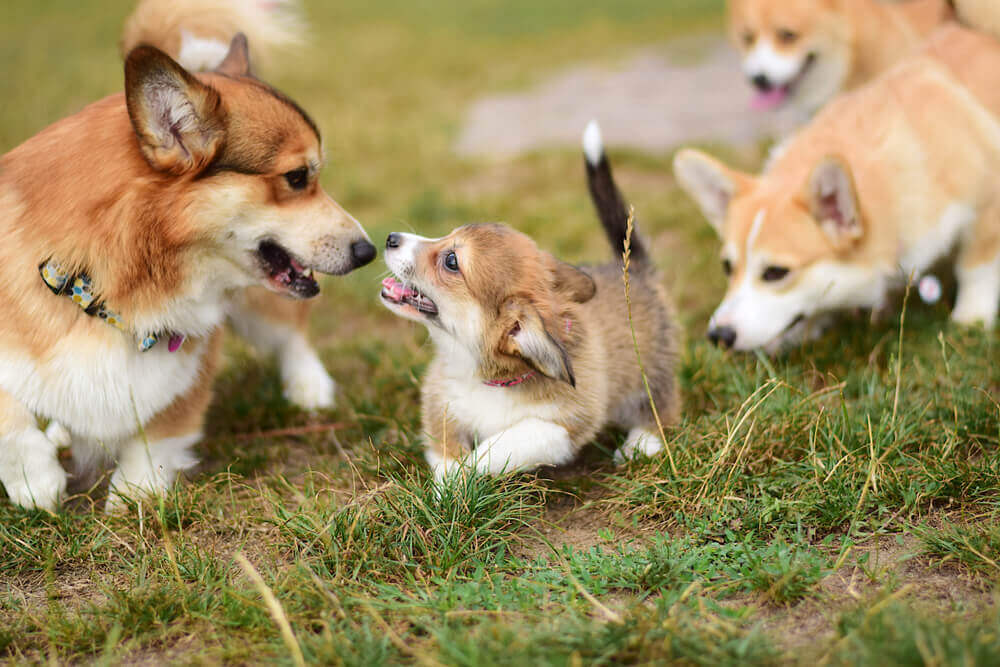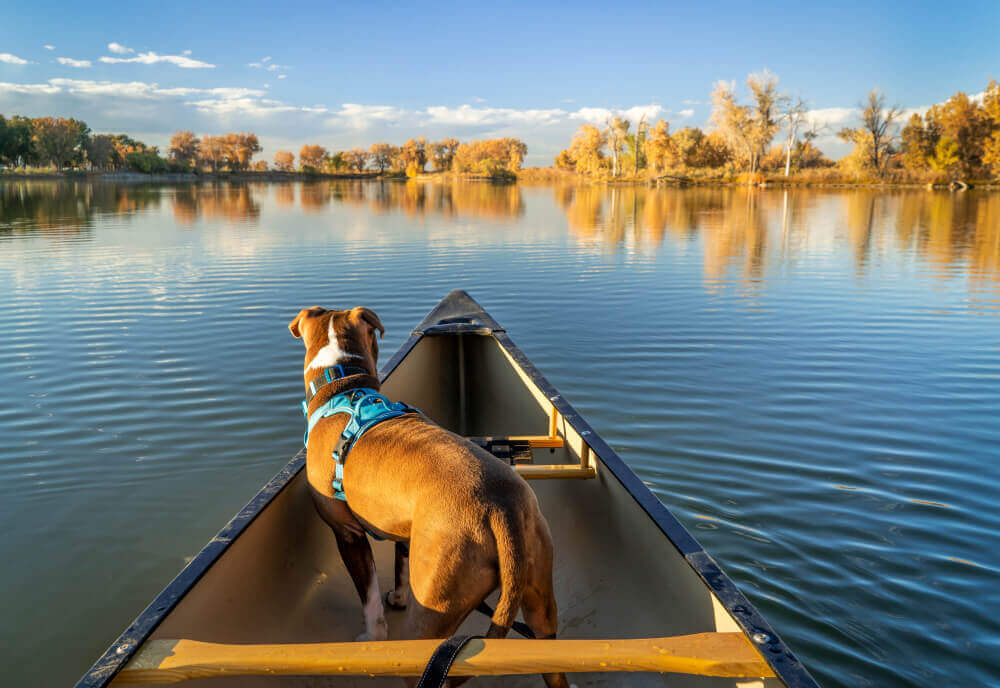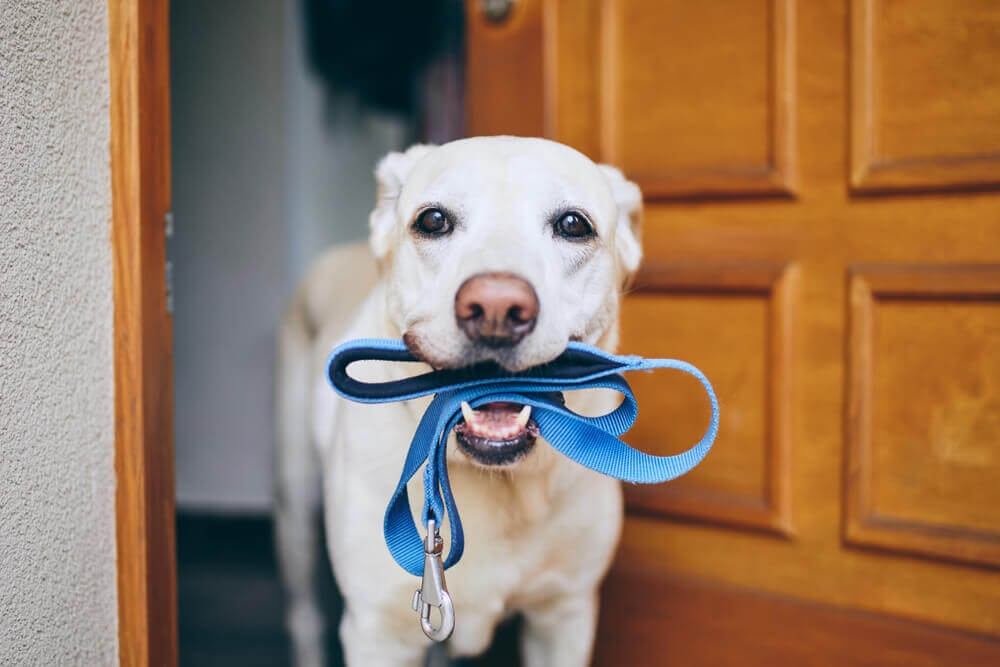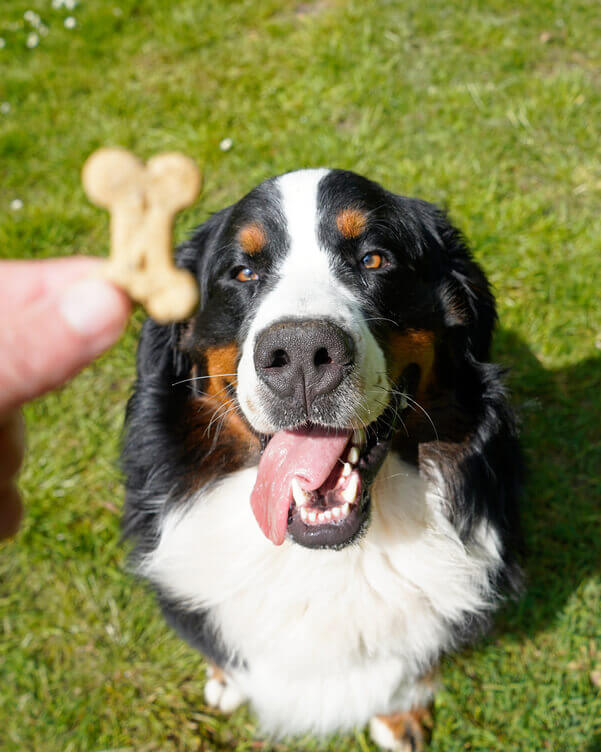Training your dog will set them up for success by teaching them life skills, alleviate their stress, and will actually make sure they can stay safe in various situations!
I sat down with Certified Dog Trainer, Erika Gonzalez, to find out the ins and outs of the dog training essentials. Follow along as we go back to the basics…
To start, could you tell us a bit about the best way to approach dog training?
The way that the professionals, and the way that I approach training is with positive reinforcement. This is a humane approach that avoids using any punishing methods. Not only is this approach nicer for our dogs but it’s also more effective and will get you the results you’re looking for!
Okay, so what is positive reinforcement?
Positive reinforcement means that you try to teach your dog what you’d like them to know and then you reward when they guess correctly – whether that’s with playtime, toys, or treats. Then, when our pups do things that we don’t particularly like, we try to positively interrupt them, redirect them or use management techniques so they don’t have the opportunity to rehearse those unwanted behaviors.
How does training differ based on the life-stage of the dog?

Life-stage is really important and adults and puppies have very different training needs. For puppies, the primary thing you should focus on is not necessarily a cue but is actually socialization. One of the main things that will determine if an older dog will have behavioural issues is the lack of proper socialization – so this step really is crucial!
What are the key points for me to to know about socializing my pup?
The prime puppy socialization window closes around 14 weeks of age as this is when the brain is most sponge-like! That said, please don’t feel bad about missing this window – this is just when the brain is most pliable but doesn’t mean it’s impossible afterward!
There are helpful checklists that you can follow but basically you should try to expose your pup to things that relate to your lifestyle. So, if you’re a musician, you’ll want to get your dog used to the sounds of music or if you have a pool, get them used to the feel of water.

The key to exposure is that they have a positive experience and interaction. Most people want their dogs to love being around humans so I see a lot of owners accidentally forcing their puppy on people and ignoring any apprehensive body language. That could cause the puppy to form a negative association with people. So, just remember to pay close attention to your dog’s body language and to never force them to do something.
What about for adults – are there certain behavioural cues that are most important?
As for adults, assuming they’re already potty trained and there’s no issues with basic behaviour, then these are the top five cues I like to teach:
- Recall – Teaching your dog to come when called.
- Name recognition – The goal of this cue is for your dog to understand their name when you call it.
- ‘Stay’ or ‘Wait’ – This is important so that your dog knows not to dart out of doors or out of the car, etc.
- ‘Touch’ – This is a hand targeting cue. It’s very similar to “come” with the difference being that the dog must bop your hand with their nose when they get to you. This one is great to refocus dogs and to get them to come back to you if they’re off leash.
- ‘Find it’ – For this one you bring a treat to your dog’s nose to get them interested. Then, toss it and tell them to ‘find it’. Dog’s will tend to check back in with you after they find the treat so it acts as a fun and engaging game of distraction.
And remember… an old dog can definitely learn new tricks! These cues can be taught at any stage as long as they don’t have any physical limitations.
Oh great! When you referred to “refocusing” or “redirecting” our dogs. What do you mean by that?
Well let’s say, for example, your dog always barks and jumps up on guests when they come to your house. In situations like this, you’ll want to avoid yelling or approaching your dog like you’re really angry because hey – your dog is just trying to say hello! So, this is a perfect time to redirect your dog’s focus by picking up a toy and tossing it into another room for them or by giving them a treat-filled toy to distract them. Think about it – if your dog was a child and they were drawing on the wall you don’t yell at them and tell them to never draw again, right?! You redirect their focus to colouring on paper instead of the wall.
Oh I love that analogy! And, how long should you actually be training per day?
I would say that with training in general it should take a couple of mins a couple of times a day – that’s sort of the benchmark! It doesn’t have to be hours on end but should just be woven in here and there throughout your daily routine.
Is there specific equipment that I should have on hand?

Here’s a list of the basics that you should always have with you:
- A treat pouch! Inside, be sure to keep 2-3 types of food rewards, some that are lower value and some higher value. Trust me, you’ll thank yourself for having this one on hand!
- Y-shaped harness. Anything else can inhibit your pups gait and can negatively impact their walking.
- Leash. I always recommend both, a regular 6ft sturdy leash and a long-line leash which can be great for training off-leash.
- And, of course, a collar with tags on it!
If you’re looking for a few extra fun things, you can never go wrong with a couple of toy rewards. Specifically, a novel toy with a small squeaker or a squeezable tube that can hold things like yogurt or peanut butter! Those lick-able reinforcements are great for senior dogs or pups with dietary restrictions.
Thanks so much for giving us the tips and tricks to the dog training essentials, Erika!




















